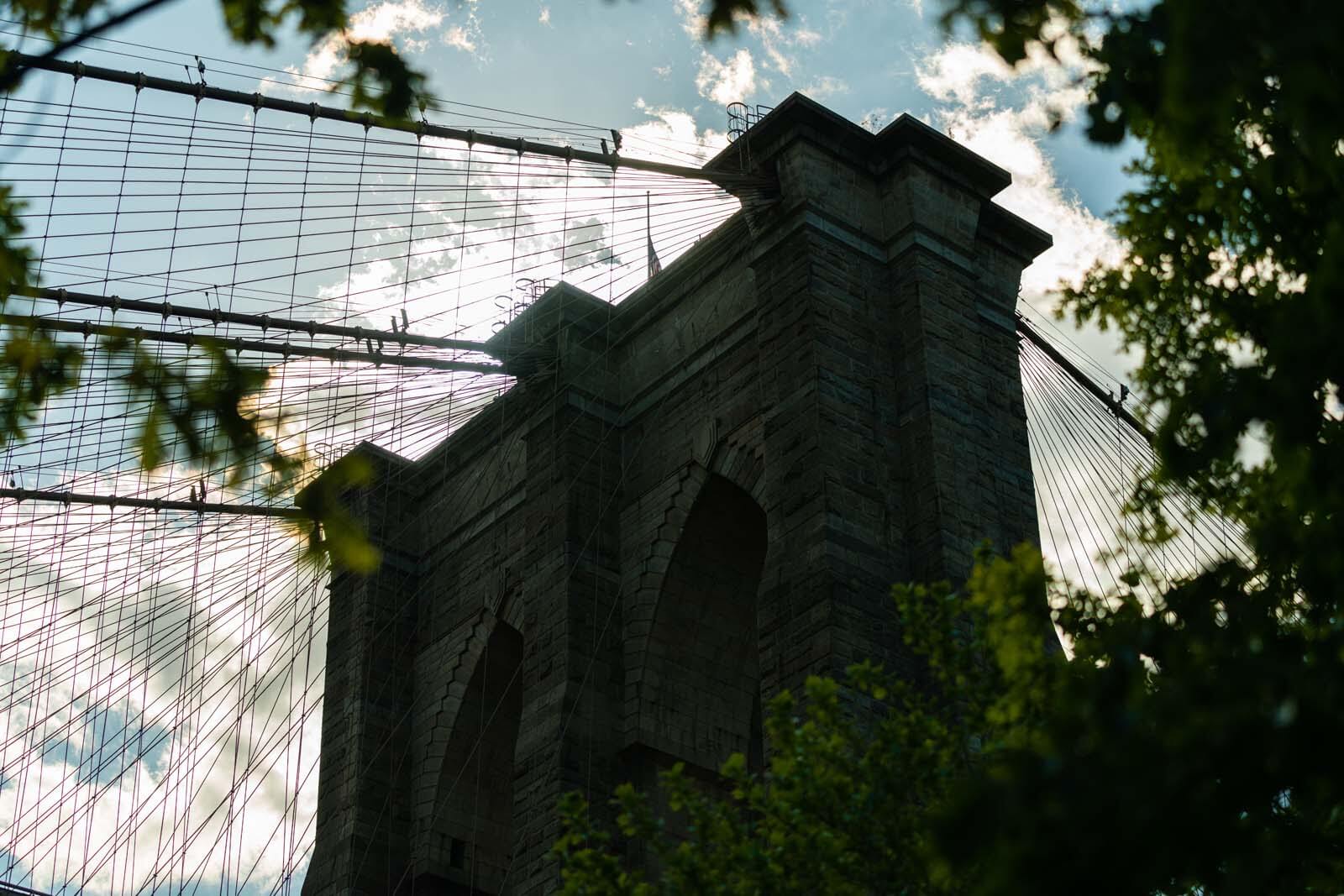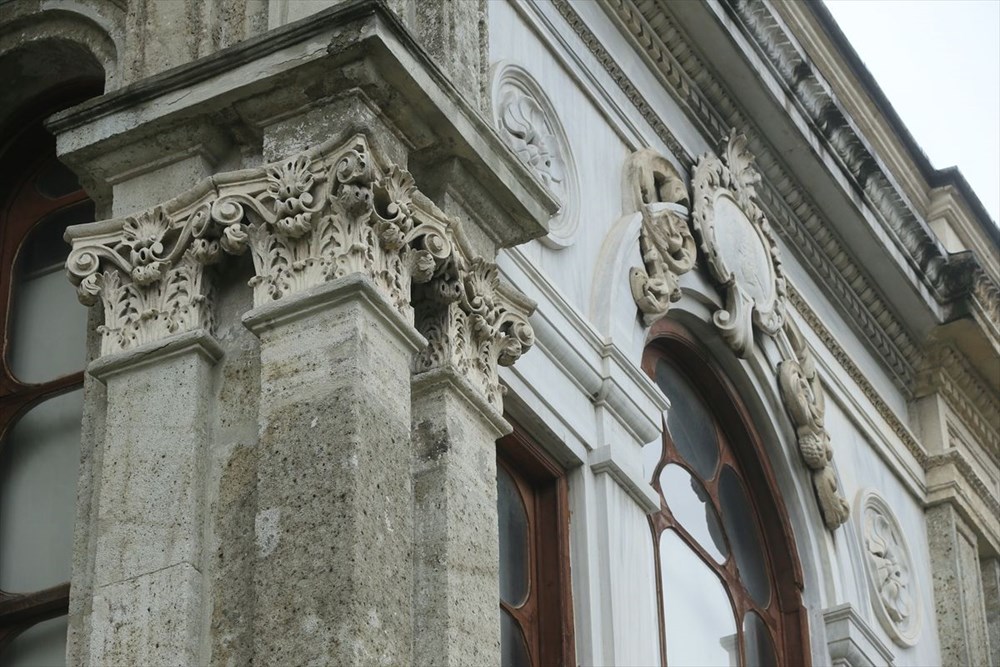Is The Brooklyn Bridge's Foundation Strong Enough? A Critical Review

Table of Contents
The Original Construction and Materials
The Brooklyn Bridge's construction, spanning from 1869 to 1883, presented unprecedented engineering challenges. The sheer scale of the project, coupled with the limited technology of the era, pushed the boundaries of 19th-century engineering. The foundation, a critical element of the bridge's structural integrity, relied heavily on innovative techniques and materials for its time. Massive caissons, essentially airtight chambers sunk to the riverbed, were used to create the bridge's foundations. These caissons were filled with compressed air to allow workers to excavate the bedrock and lay the foundation stones.
- Caisson Construction: The construction of the caissons was a monumental undertaking, fraught with danger due to the compressed air environment and the immense water pressure. "The bends," a dangerous condition caused by rapid decompression, tragically afflicted many workers.
- Foundation Stones: Limestone and granite, chosen for their exceptional strength and durability, formed the bedrock of the Brooklyn Bridge's foundation. These materials were carefully selected to withstand the immense weight of the bridge structure and the relentless forces of nature.
- Initial Foundation Issues: While the overall construction was a triumph, there were documented challenges during the initial foundation laying, including some minor settling issues which were addressed during the construction phase itself.
Modern Assessments and Ongoing Maintenance
The Brooklyn Bridge undergoes rigorous inspection and maintenance programs to ensure its continued structural integrity and public safety. The foundation's condition is meticulously monitored using advanced technologies such as non-destructive testing (NDT) methods. This includes ground-penetrating radar, ultrasonic testing, and visual inspections to detect any signs of deterioration or weakness. These assessments are crucial for identifying potential problems early and implementing timely repairs.
- Inspection Frequency: Regular inspections, including detailed assessments of the foundation, are conducted at frequent intervals to identify and address any potential issues promptly.
- Testing Methods: Modern NDT techniques allow for non-invasive assessment of the foundation's condition, ensuring the bridge's structural integrity without disrupting its operation.
- Major Repair Projects: Over the years, several significant repair and renovation projects have been undertaken, including strengthening elements of the foundation and replacing deteriorated components to maintain the bridge's long-term stability. These projects demonstrate a proactive approach to preserving the Brooklyn Bridge's structural integrity.
Environmental Factors and Their Impact
The Brooklyn Bridge's foundation faces significant environmental challenges. The constant exposure to the elements—wind, rain, ice, and salt water—contributes to erosion and corrosion. Rising sea levels, a consequence of climate change, pose a growing threat to the foundation's long-term stability. Saltwater corrosion is particularly damaging to the stonework and metal components of the foundation.
- Saltwater Corrosion: The constant exposure to saltwater significantly accelerates the corrosion of the metal components within the foundation, posing a major challenge to the bridge's long-term stability.
- Mitigation Strategies: Protective coatings and other mitigation strategies are employed to minimize the impact of environmental factors on the foundation.
- Long-Term Projections: Ongoing monitoring and proactive measures are crucial to mitigate the long-term risks posed by rising sea levels and other environmental challenges.
Future-proofing the Brooklyn Bridge's Foundation
Looking to the future, continuous innovation is vital to ensure the Brooklyn Bridge's longevity. Investing in advanced monitoring systems and exploring new materials and techniques for repair and reinforcement are crucial.
- Innovative Technologies: Emerging technologies in structural health monitoring and repair, including advanced sensors and smart materials, offer potential solutions for enhancing the foundation's strength and durability.
- Future Projects: Long-term planning involves proactive measures to address predicted challenges, including potential sea-level rise and the ongoing effects of environmental degradation.
- Continued Operation: Strategic planning, ongoing maintenance and investment in new technologies will ensure the continued safe operation of this iconic bridge for generations to come.
Conclusion: Is the Brooklyn Bridge's Foundation Strong Enough? A Final Verdict
The Brooklyn Bridge's foundation, while a marvel of 19th-century engineering, faces ongoing challenges. While the current state of the foundation demonstrates remarkable resilience, thanks to dedicated maintenance programs and modern assessments, the threats posed by environmental factors require continuous vigilance. The bridge's structural integrity relies heavily on ongoing inspections, proactive maintenance, and the incorporation of new technologies. Securing the Brooklyn Bridge's foundation is not just about maintaining a vital transportation artery but preserving a symbol of American ingenuity and history. To learn more about the ongoing efforts to maintain the Brooklyn Bridge’s structural integrity and its rich history, we encourage you to visit the official website and explore resources from the New York City Department of Transportation and relevant historical societies. The future of the Brooklyn Bridge’s foundation, and its continued safe operation, depends on our continued commitment to preserving this iconic landmark for generations to come.

Featured Posts
-
 Red Sox Trade With Cardinals A Perfect Fix For Bostons Uncertain Bullpen
May 18, 2025
Red Sox Trade With Cardinals A Perfect Fix For Bostons Uncertain Bullpen
May 18, 2025 -
 Breaking The Rules A Look At Red Carpet Guest Behavior
May 18, 2025
Breaking The Rules A Look At Red Carpet Guest Behavior
May 18, 2025 -
 Metropolis Japan A Deep Dive Into Its Urban Development
May 18, 2025
Metropolis Japan A Deep Dive Into Its Urban Development
May 18, 2025 -
 Analyzing Mlb Home Run Prop Bets For May 8th Schwarber Spotlight
May 18, 2025
Analyzing Mlb Home Run Prop Bets For May 8th Schwarber Spotlight
May 18, 2025 -
 Watch Easy A On Bbc Three Hd Dates Times And Where To Find It
May 18, 2025
Watch Easy A On Bbc Three Hd Dates Times And Where To Find It
May 18, 2025
Latest Posts
-
 37 Yasinda Bile Zirvede Novak Djokovic In Basarisinin Sirri
May 18, 2025
37 Yasinda Bile Zirvede Novak Djokovic In Basarisinin Sirri
May 18, 2025 -
 Novak Djokovic Yasin Oenemini Yok Sayan Tenis Ustasi 37 Yas
May 18, 2025
Novak Djokovic Yasin Oenemini Yok Sayan Tenis Ustasi 37 Yas
May 18, 2025 -
 Pehar I Zahvalnost Mensik Istice Dokovicev Doprinos
May 18, 2025
Pehar I Zahvalnost Mensik Istice Dokovicev Doprinos
May 18, 2025 -
 Djokovic In 37 Yasindaki Azmi Yillara Meydan Okuyan Bir Sampiyon
May 18, 2025
Djokovic In 37 Yasindaki Azmi Yillara Meydan Okuyan Bir Sampiyon
May 18, 2025 -
 Novace Bez Tebe Ni Ja Ne Bih Bio Ovde Mensik I Dokovic Prica O Uspehu
May 18, 2025
Novace Bez Tebe Ni Ja Ne Bih Bio Ovde Mensik I Dokovic Prica O Uspehu
May 18, 2025
